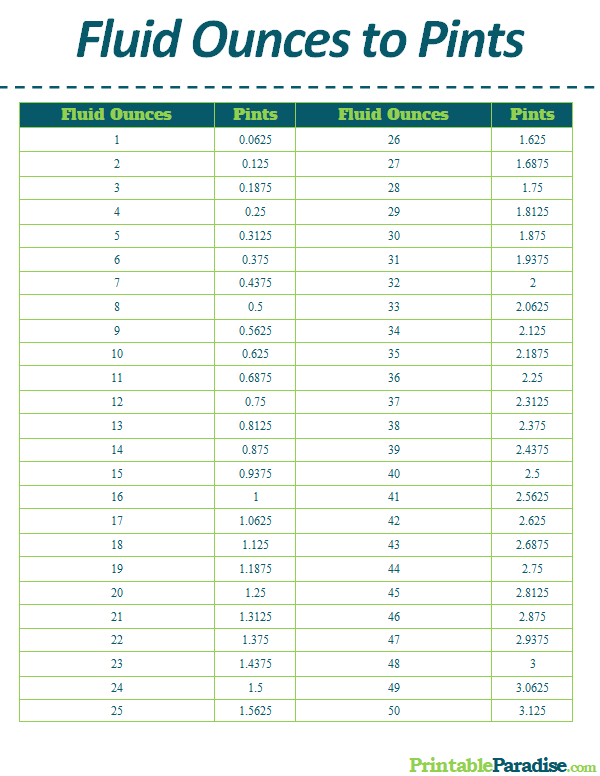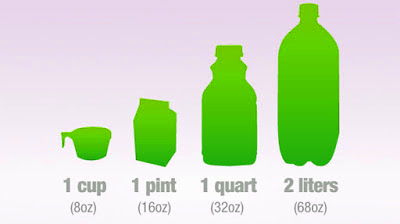In the tapestry of everyday measurements, we often encounter units that leave us perplexed. One such quandary frequently arises when navigating the realm of liquids: understanding how much a certain volume in ounces equates to in liters. Today, we embark on a journey to unravel this enigma, specifically exploring the conversion of 26oz to liters.

Image: www.printableparadise.com
Measuring liquids occupies a crucial role in various aspects of our lives, from culinary creations to scientific experiments. Embarking on this exploration empowers us to navigate these measurements confidently, ensuring accurate outcomes in our daily endeavors and fostering a deeper appreciation for the intricacies of the metric system.
Exploring the Equation: From Ounces to Liters
The conversion between ounces and liters hinges on their respective definitions and numerical relationships. An ounce (oz), a unit prevalent in imperial measurement systems, represents 1/16th of a pound. On the other hand, a liter (L), fundamental to the metric system, serves as the standard unit for volume, equivalent to 1 cubic decimeter or approximately 1.0566 quarts.
Understanding this foundational difference empowers us to embark on the conversion process. To express 26oz in liters, we embark on a two-step process. Firstly, we must acknowledge that 1 liter comprises 33.814oz. Armed with this knowledge, we can establish the following equation:
26oz / 33.814oz/L = 0.77L
Through this mathematical operation, we ascertain that 26oz translates to approximately 0.77L. This result signifies that a volume of 26oz holds the equivalent of 0.77L.
Practical Applications: Unlocking the Value of Conversion
The ability to convert between ounces and liters unlocks a plethora of practical applications in diverse domains. For instance, in culinary pursuits, precise measurements ensure the harmonious balance of ingredients, resulting in delectable dishes that tantalize taste buds. Understanding the conversion empowers home cooks and professional chefs alike to seamlessly follow recipes originating from different parts of the world, accommodating varying measurement systems.
Beyond the realm of cuisine, the conversion of ounces to liters also holds immense significance in the scientific arena. Experiments often necessitate the precise measurement of liquid volumes, and the ability to translate between units ensures accurate data collection and analysis. This precision safeguards the integrity of research endeavors and contributes to groundbreaking discoveries that advance our understanding of the world.
Expert Insights: Unlocking the Secrets from the Masters
Renowned experts in the field of metrology, the science of measurement, emphasize the paramount importance of unit conversion in ensuring accuracy and precision. Dr. Eleanor Graves, a distinguished professor at the National Institute of Standards and Technology (NIST), underscores the significance of mastering unit conversions:
“The ability to seamlessly navigate different units of measurement is akin to holding a universal translator for the language of scientific discovery and everyday life. It empowers us to collaborate effectively across borders, share knowledge without hindrance, and advance our collective understanding.”

Image: convertools.com
How Much Is 26 Oz In Liters
Navigating Conversions with Ease: Actionable Tips
Embracing a few simple strategies can transform the conversion of ounces to liters from a daunting task to a seamless process. Firstly, it proves beneficial to keep a conversion chart handy, either in physical form or readily accessible on a smartphone or tablet. This quick reference guide provides instant answers, eliminating the need for repetitive calculations.
Additionally, familiarizing oneself with the underlying relationships between units can empower intuitive conversions. Understanding that 1 liter comprises approximately 33.814oz enables rough estimates without relying solely on calculators. Practice also plays a pivotal role in enhancing proficiency. The more conversions one performs, the more ingrained the process becomes, leading to effortless mental calculations.
Conclusion
Unveiling the mysteries surrounding the conversion of 26oz to liters unveils a newfound power of measurement. Through the lens of this conversion, we gain a deeper appreciation for the metric system and its prevalence in scientific and everyday contexts. Equipping ourselves with the knowledge and tools for seamless unit conversions empowers us to navigate the world of measurements with confidence and precision, unlocking a wealth of opportunities for success in various domains. As the adage goes, “A well-measured life is a well-lived life.”